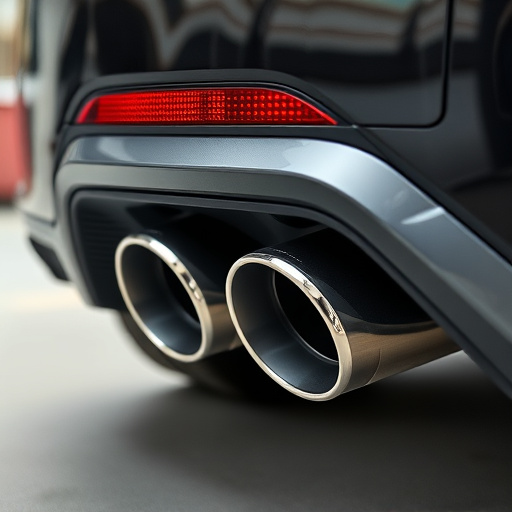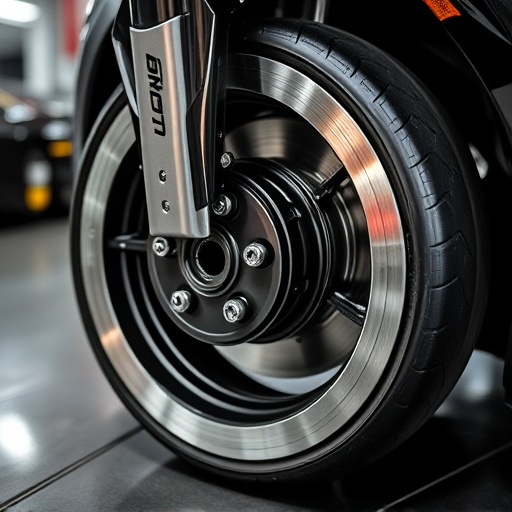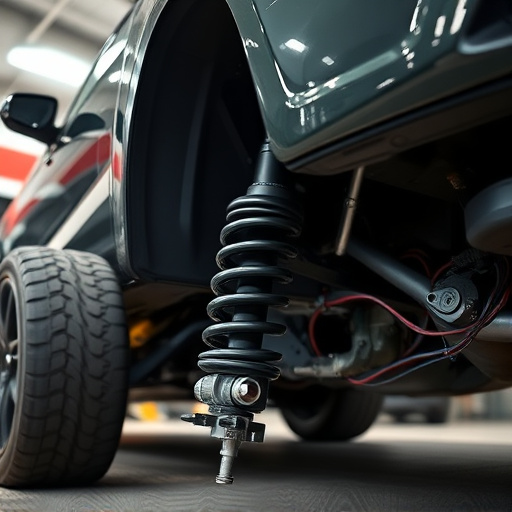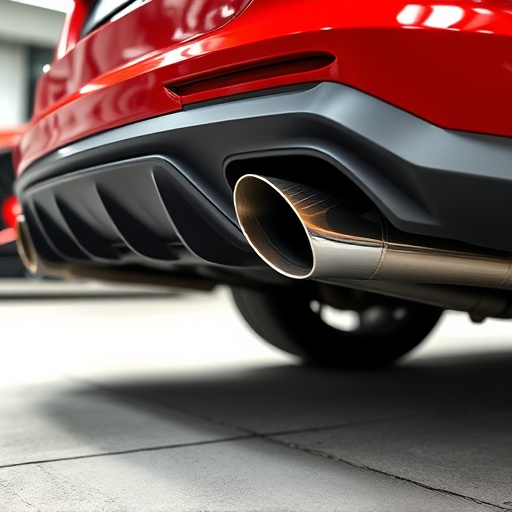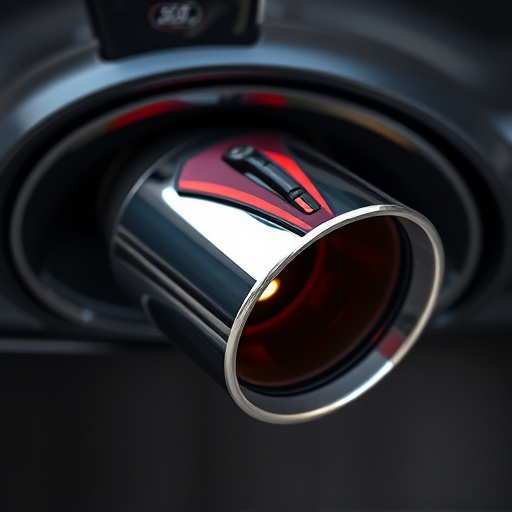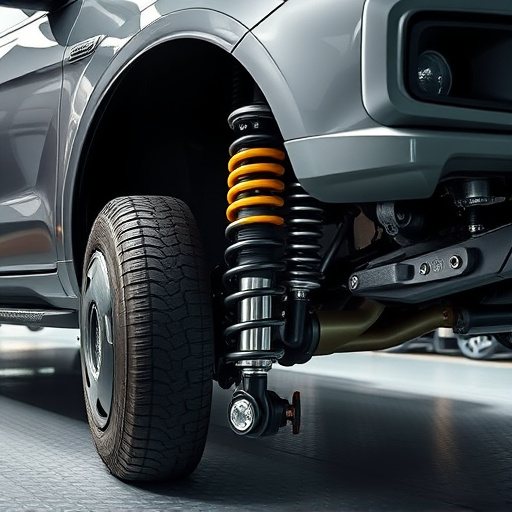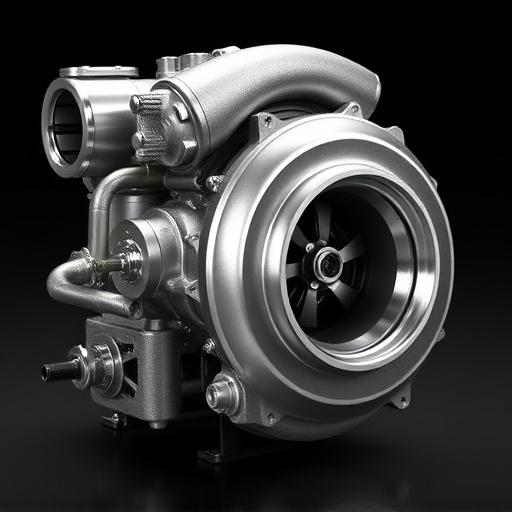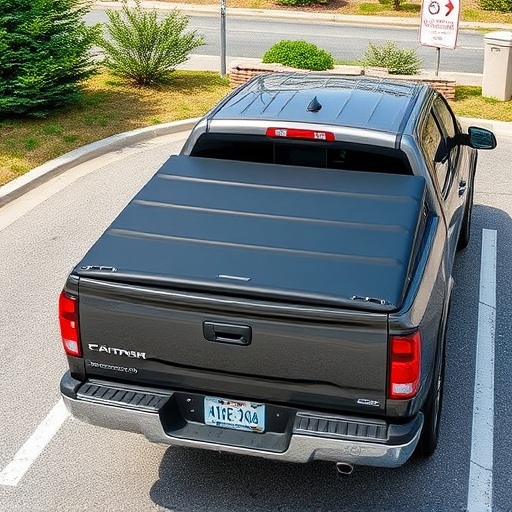Backpressure in a truck's exhaust system can harm performance and cause engine damage. Truck muffler tips optimize airflow by minimizing restrictions, using strategic design and materials for smooth gas passage. High-performance air filter kits also enhance intake efficiency, indirectly reducing backpressure. Regular maintenance of mufflers, along with inspecting and replacing worn suspension components, improves exhaust flow, boosts performance, saves fuel, and reduces environmental impact. Strategic selection and upkeep of truck muffler tips are key to achieving these benefits.
Truck muffler tips are essential components for reducing backpressure, enhancing engine performance, and minimizing noise pollution. This article delves into the intricacies of understanding backpressure in truck mufflers, offering key strategies for its efficient reduction. We explore practical implementations and maintenance practices for effective truck muffler tips, providing valuable insights for both professionals and enthusiasts looking to optimize their vehicle’s exhaust system. Discover actionable truck muffler tips that make a tangible difference.
- Understanding Backpressure in Truck Mufflers
- Key Strategies for Efficient Reduction of Backpressure
- Implementing and Maintaining Effective Truck Muffler Tips
Understanding Backpressure in Truck Mufflers

Backpressure is a critical aspect to consider when it comes to truck mufflers and overall engine performance. In simple terms, backpressure refers to the resistance in the exhaust system that can hinder the smooth flow of gases from the engine. This occurs as the exhaust gases try to exit through the muffler, encountering restrictions along the way. High levels of backpressure can lead to reduced engine efficiency, decreased horsepower, and even potential damage to the engine over time.
One of the primary goals when addressing backpressure is to ensure the smooth passage of exhaust gases. Truck muffler tips play a significant role in this process by optimizing airflow. By implementing specific design features and materials, these tips can minimize restrictions, allowing for easier gas flow. Additionally, integrating high-performance parts like air filter kits can further enhance engine performance by improving overall air intake efficiency, thereby indirectly contributing to backpressure reduction.
Key Strategies for Efficient Reduction of Backpressure
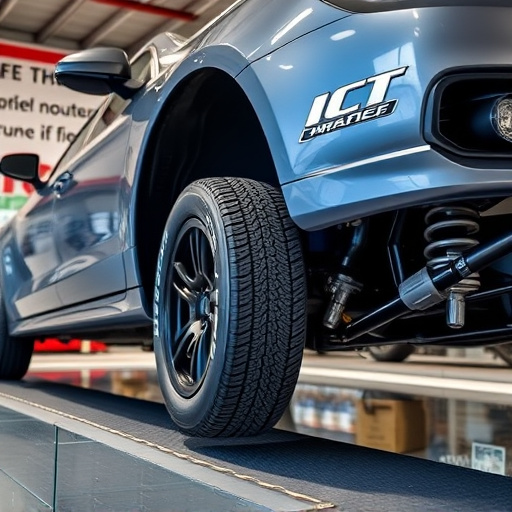
The efficient reduction of backpressure in a truck’s exhaust system is a key aspect of optimizing performance and minimizing noise pollution. This can be achieved through several strategic approaches tailored to the unique requirements of commercial vehicles. One effective strategy involves incorporating high-quality truck muffler tips designed with advanced sound-dampening technology. These tips not only reduce noise levels but also minimize backpressure by facilitating a smoother flow of exhaust gases, ensuring optimal engine performance.
Additionally, regular maintenance and upgrading of exhaust mufflers can significantly contribute to this goal. Modern performance exhaust systems are engineered to balance power and sound reduction, allowing for enhanced engine performance while maintaining acceptable noise levels. By regularly inspecting and replacing worn-out suspension components, which can cause vibrations leading to increased backpressure, fleet operators can further streamline the exhaust process, resulting in improved fuel efficiency and reduced environmental impact.
Implementing and Maintaining Effective Truck Muffler Tips
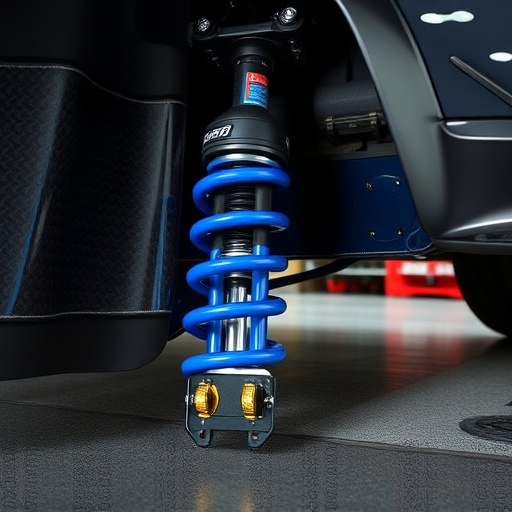
Implementing effective truck muffler tips can significantly enhance engine performance and reduce backpressure, which is crucial for maintaining optimal efficiency. The first step involves selecting the right muffler tip designed to suit your vehicle’s specifications. Consider factors like exhaust flow rate, noise levels, and the compatibility with your existing exhaust system. Once installed, regular maintenance becomes essential. This includes cleaning the muffler tips and ensuring they are free from debris or buildup, which can restrict airflow.
Additionally, integrating other components like air filter kits and well-maintained suspension and brake parts contributes to overall performance. Regularly checking and replacing worn-out parts, such as the muffler tip gaskets and hangers, is vital to prevent leaks and ensure the continued effectiveness of your truck’s exhaust system. By combining strategic muffler tip selection with meticulous upkeep, you can achieve a smoother ride, better fuel efficiency, and reduced backpressure, ultimately enhancing your truck’s overall capabilities.
By implementing these strategic truck muffler tips, you can significantly reduce backpressure, enhancing engine performance and contributing to a quieter, more efficient driving experience. Regular maintenance is key to sustaining these benefits, ensuring your truck’s exhaust system operates at its optimal level. Remember, efficient backpressure reduction not only improves sound but also plays a vital role in preserving your vehicle’s overall health.



